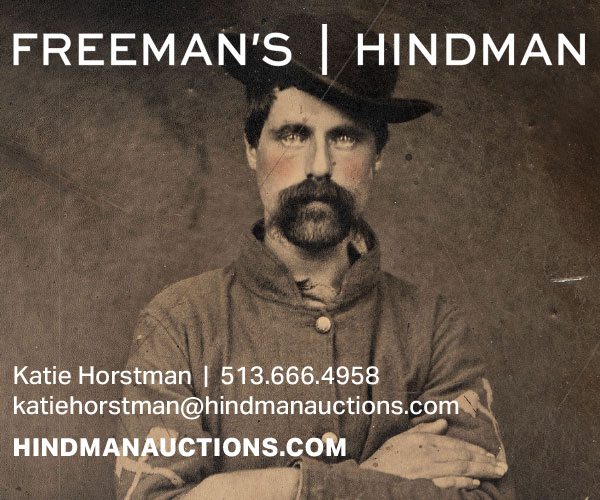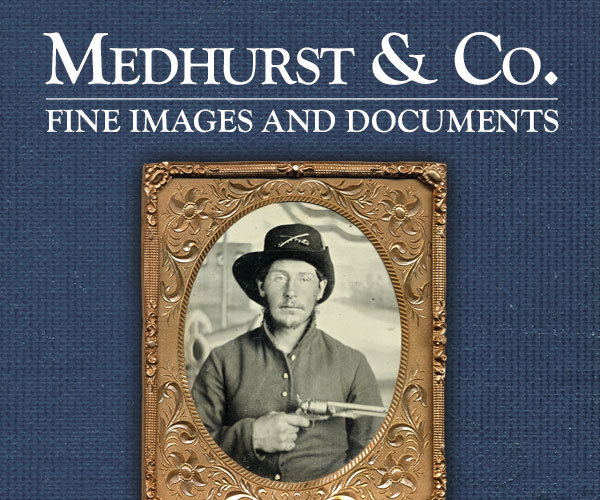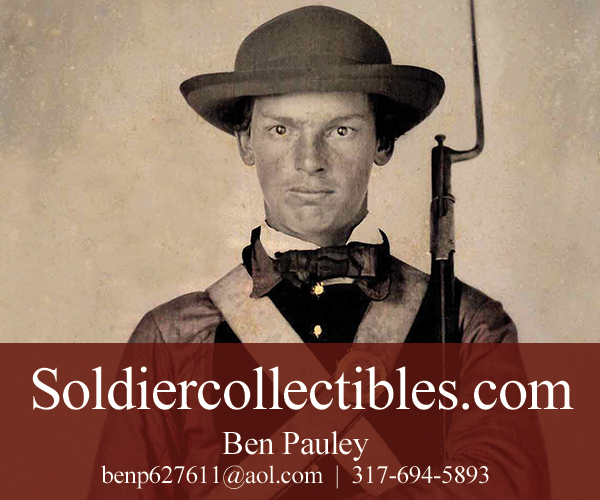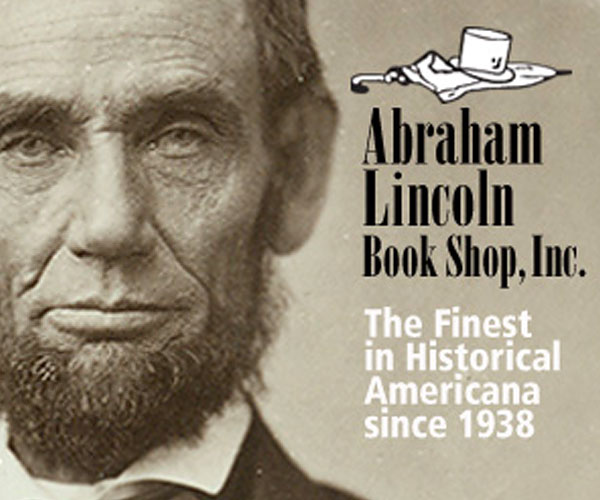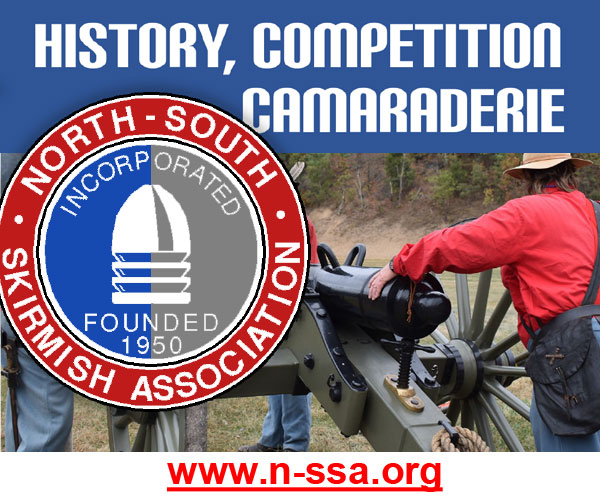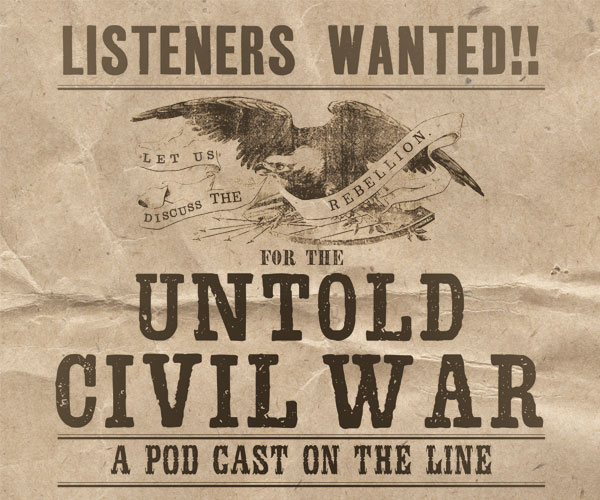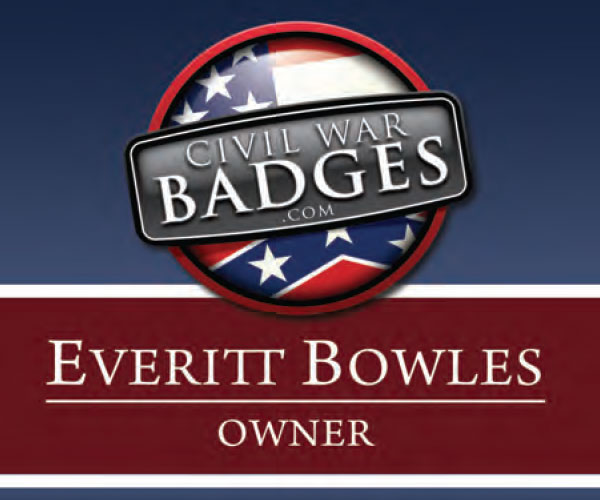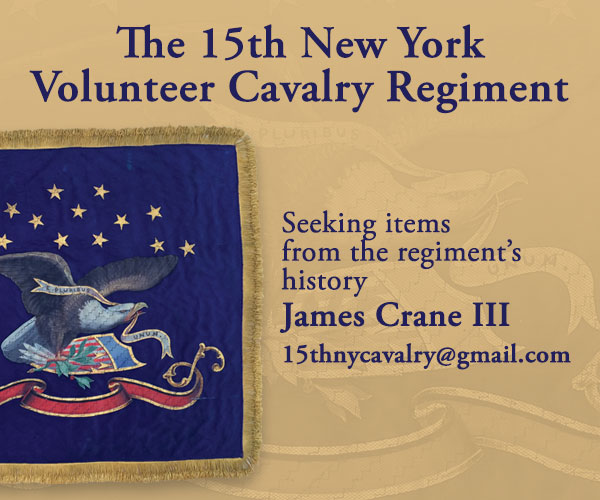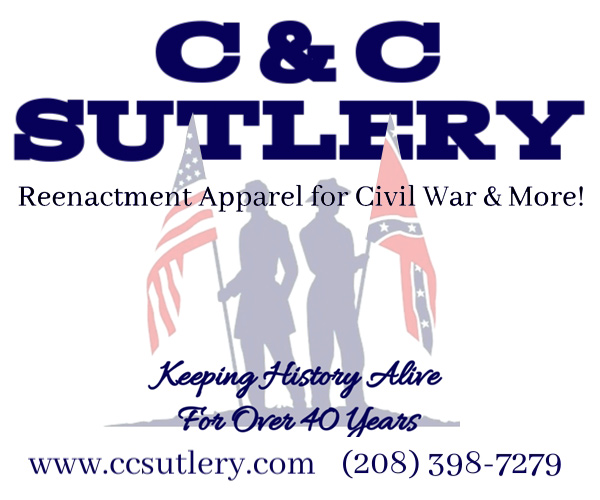The complete issue
Vol. XXXII, No. 3
(60 pages)
Print edition: Visit our store to check availability
Digital edition: Visit JSTOR.org to purchase
Subscribe to MI
Explore the MI Archives: Browse | Advanced search | Tutorial
Inside
Cover image
A young infantry soldier fully prepared to march graces the cover of this issue. The image is a ruby glass ambrotoype from the featured collection of Civil War images owned by Matt Cranford.
Table of Contents (p. 1)
Editor’s Desk (p. 2)
“The Scanner Light Is Always On” and Military Images will often be in attendance at Civil War and photography shows as well, following the precedent set by founding MI editor Harry Roach. Armed with a flatbed scanner and laptop computer, readers are urged to bring their own images to shows so they can be scanned and included in future issues. The magazine is also pursuing a more vibrant social media presence, providing images and education on Facebook, for example. Many of the images in the “Stragglers” section of MI are from these shows and other sources of media sharing.
Mail Call (p. 3)
Subscribers continue the discussion of whether images show photographer props or soldier property based on images from the Spring 2014 issue of Military Images. A letter provides a tentative identification of a Georgia infantry soldier. Another subscriber offers more information on the “Battle Shirt!” article, explaining how Maj. Gen. Buford’s statue at Gettysburg was based on the battle shirt he wore on the first day of fighting there.
Passing in Review (p. 4)
Lens on the Texas Frontier by Lawrence T. Jones III is reviewed. The publication includes early images from Texas beginning in 1843, and traces the development of the Lone Star State and its many different cultures.
Art of War: Fighting Men from the Collection of Matt Cranford (pp. 5-19)
Fourteen different images from the extensive collection of Matt Cranford are included in this article. Cranford describes some of the known histories behind many of the images, including one of his great-grandfather, but also explains why he was drawn to include them in his collection. He selects images that are aesthetically interesting, such as the cover image which includes a background that gives the illusion of the soldier being outdoors in nature, or the very tall and thin Confederate infantryman whose uniform evokes images of homespun. One image in the collection depicts two soldiers relaxing with their pipes, with one soldier wearing a knit cardigan. The collection also includes a few group images that give a sense of what camp life might have been like, as well as more formal poses that illustrate standard equipment as well as demonstrating a cavalry guard position.
Antebellum Warriors (pp. 21-22)
This article presents two different images, beginning with a ninth-plate daguerreotype featuring a newly graduated West Point cadet wearing his uniform as a second lieutenant of engineers in about 1854. A smaller image reveals the antebellum image to be that of the future Union Maj. Gen. James MacPherson, who was killed during the Battle of Atlanta in 1864. A second antebellum image is from a half-plate daguerreotype of a much older man wearing a uniform believed to be from the Ringgold Light Artillery, formed as a volunteer militia in 1849 by Pennsylvania veterans of the Mexican War. The ornate uniform, which includes a Dragoon dress hat with horse hair plume, is an example of a full dress uniform of the era.
Homeland Security: Civil War Style by Philip Katcher (pp. 23-26)
Readers of MI generally expect to find images of soldiers, but this interesting article traces the expansion of uniformed police forces in the North during the Civil War. The author describes the wide range of challenges that emerged while fighting a civil war with only a few major cities having police organized in a way that we would recognize today. New York City police were expected to assist the War Department in the surveillance and apprehension of spies, halting arms transfers, and capturing bounty jumpers. Police were also expected to deal with minor crimes that resulted from the war, such as juvenile delinquency and petty crimes that came from minors who were unsupervised by effectively single mothers. Through a collection of 13 images, the article highlights the different uniforms worn by police departments during the Civil War era.
In Lambent Glory: A Pennsylvania Private Fights His Last Battle by Scott Valentine (pp. 28-29)
A carte de visite of Pvt. Thomas G. Grier, 51st Pennsylvania Infantry, inspired this article, which examines the impact of yellow fever on the New Berne, North Carolina area in 1864. Pvt. Grier lost his life assisting both military and civilian victims during an outbreak of the disease.
Master’s Mates: A Primer by Ron Field (pp. 30-34)
The massive expansion of the Federal navy during the Civil War required a similar expansion of various crew members. This article explores the role of the master’s mate, focusing on the basic requirements to be considered for the role, the expectations of a master’s mate, and how the navy went about finding qualified candidates as the need for these skilled crew members grew. The article uses six carte de visite images to illustrate the discussion of what the master’s mate uniform consisted of, each with a considerable description of the uniform and a biography when possible.
Mobile Bay & Havana Harbor: A Newly Discovered Tintype of Battleship Maine Commander Charles D. Sigsbee When He Was A Civil War Ensign by Brooke Hollingsworth (pp. 35-36)
This article highlights the discovery of a new image of Capt. Charles D. Sigsbee, the commander of the battleship Maine, the destruction of which precipitated the Spanish-American War in 1898. The new image, showing a relaxed ensign leaning against a prop with one hand in his pocket, is a tintype of carte de visite size, found attached to a government document that included Sigsbee’s name and dates to sometime after Sigsbee’s 1863 graduation from the Naval Academy. Sigsbee served during the Battle of Mobile and the 1864 and 1865 assaults on Fort Fisher during the Civil War, and continued his naval career until retirement in 1907. The article also includes a photograph taken from an 8×10” negative with Sigsbee and his staff officers aboard the Texas, the command he was given after the destruction of the Maine.
Uniforms & History: Civil War Corps Badges Are Symbols of Service and Sacrifice by Michael J. McAfee (pp. 37-40)
The article outlines the origin and use of corps badges by the Union Army of the Potomac. Originally devised by Maj. Gen. Philip Kearney to allow him to clearly identify the officers under his command of the Third Division, the practice was expanded by Maj. Gen. Joseph Hooker throughout the Army of the Potomac. Eventually, the corps badge would go from a helpful way for commanders to identify their soldiers to becoming “marks of esprit de corps” that unified troops in all Union army commands. The trefoil, round disc, Greek cross, Maltese cross, and other corps badges are shown in the 11 images that accompany the article. Each image has an accompanying description of how the soldier wore his corps badge on his uniform.
Stragglers (pp. 41-56)
A wide variety of 25 different images is presented, some of which include poignant stories or unusual scenes. A pair of images, including a previously unknown carte de visite, illustrates the story of Hettie Clary Stone and her father, Brig. Gen. Charles Pomeroy Stone. A half-plate tintype from 1861 tells the story of the Taylor brothers from McLennan County, Texas, who were shortly to leave for service in the Confederate army. A carte de visite image features five soldiers of the 63rd New York Infantry with one civilian; their flags identify them as part of an Irish Brigade from the Army of the Potomac. Animals appear in a number of images, to include a cat with a Federal second lieutenant, two cavalry troopers with their mounts, and one carte de visite with a Union cavalryman leading a lady riding sidesaddle. Perhaps the most unusual image of this collection is most likely from 1898; a close-up detail from the photograph is accompanied by a lengthy description of a bicycle messenger who appears with the military unit.
The Last Shot (p. 60)
A Federal artillery soldier holds a small, uncertain girl on his lap. Most likely his daughter, the sixth-plate ambrotype asks the viewer to imagine the relationship between the toddler and the soldier and the story behind the image.

